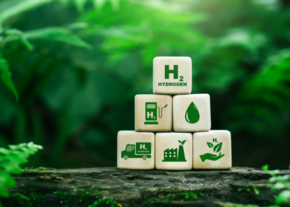
EV batteries, over 300 new mines needed for raw materials
Simonluca Pini, Contributing Editor Sole 24 Ore
The growing demand for batteries requires 300 new mines
The energy transition taking place in the automotive world will not change the mobility landscape alone. In addition to stopping sales of ICE vehicles in Europe from 2035, car makers will have to review their supply chains. One of the most complex aspects is related to battery production, which is expected to grow exponentially in the coming years. Besides billion-dollar investments in Gigafactories, i.e., where batteries are produced, many questions revolve around sourcing the components needed to build these batteries. One of the main issues is related to the availability of raw materials, a key component for the production of vehicles without piston-driven engines. The question of whether the current supply of raw materials is sufficient to support the demands of the automotive industry is on every manufacturer’s table. The answer? According to a study conducted by Benchmark Mineral Intelligence, the answer is decidedly negative. At least 384 new graphite, lithium, nickel and cobalt mines will be needed to meet the demand by 2035, based on the average mine size in each sector. Taking commodity recycling into account, the number could drop to about 336 mines. As Benchmark points out, demand for lithium-ion batteries is projected to grow sixfold by 2032. However, supplies of lithium, graphite, nickel and cobalt will have to keep up with demand, especially after 2030. Although recycling will have the biggest impact on future cobalt supply, according to Benchmark, it is not expected to have a major impact on other materials such as graphite.
How much graphite will be needed?
To meet the demand for anode materials, about 97 new mines for the extraction of natural lamellar graphite need to be built, assuming an average size of 56,000 tons per year and no contribution from recycling. Natural graphite is normally mixed with synthetic graphite in the anodes of lithium-ion batteries. There are currently more than 70 mines operating globally, and most are located in China and Africa. Current lithium-ion battery recycling has focused on recovering materials from the battery cathode rather than the anode, but recent recycling projects are now also beginning to focus on recovering materials from the anode. Graphite recycling and recovery is crucial to reduce dependence on mined materials. For synthetic graphite, according to Benchmark, 54 plants with an average production size of 57,000 tons will be needed by 2035. If the amount of silicon added to the battery anode increases more than Benchmark expects, the required number of new graphite mines would be somewhat lower.
59 new Lithium mines
How much lithium will be needed in the next few years to power millions of electric cars? According to Benchmark, 74 new lithium mines with an average production size of 45,000 tons would be needed by 2035 to meet the world's lithium demand. If we take into account the projected volumes from recycled lithium, this number could drop to 59. Australia is set to remain the dominant producer of lithium in this decade with more than 13 lithium mines producing lithium containing Spodumene rock, more than 75 percent of which is refined in China.
Nickel and Cobalt
According to Benchmark, 72 additional mining projects with an average production size of 42,500 tons will be needed to meet the demand for refined nickel. On the other hand, recycling is expected to have the greatest impact on cobalt mining. Without recycling, 62 cobalt mining of 5,000 tons each would be needed by the end of 2035. Taking projected recycled volumes into account, however, that number drops by nearly half to 38.
How much graphite will be needed?
To meet the demand for anode materials, about 97 new mines for the extraction of natural lamellar graphite need to be built, assuming an average size of 56,000 tons per year and no contribution from recycling. Natural graphite is normally mixed with synthetic graphite in the anodes of lithium-ion batteries. There are currently more than 70 mines operating globally, and most are located in China and Africa. Current lithium-ion battery recycling has focused on recovering materials from the battery cathode rather than the anode, but recent recycling projects are now also beginning to focus on recovering materials from the anode. Graphite recycling and recovery is crucial to reduce dependence on mined materials. For synthetic graphite, according to Benchmark, 54 plants with an average production size of 57,000 tons will be needed by 2035. If the amount of silicon added to the battery anode increases more than Benchmark expects, the required number of new graphite mines would be somewhat lower.
59 new Lithium mines
How much lithium will be needed in the next few years to power millions of electric cars? According to Benchmark, 74 new lithium mines with an average production size of 45,000 tons would be needed by 2035 to meet the world's lithium demand. If we take into account the projected volumes from recycled lithium, this number could drop to 59. Australia is set to remain the dominant producer of lithium in this decade with more than 13 lithium mines producing lithium containing Spodumene rock, more than 75 percent of which is refined in China.
Nickel and Cobalt
According to Benchmark, 72 additional mining projects with an average production size of 42,500 tons will be needed to meet the demand for refined nickel. On the other hand, recycling is expected to have the greatest impact on cobalt mining. Without recycling, 62 cobalt mining of 5,000 tons each would be needed by the end of 2035. Taking projected recycled volumes into account, however, that number drops by nearly half to 38.


























